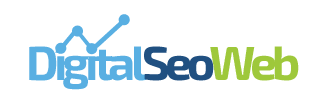
Why Developing Website Apps Should Start With a Story, Not a Feature List
Who said starting with features was the only way? Let’s turn that upside down. Begin by mapping out the actual flow users will move through. Watch your process: when you visit a site, what makes you pause—or keep going? That’s the real clue. Workflow-first thinking surfaces the gaps in logic, confusion points, and silent hurdles. It’s like sketching a route before packing your bags—you get there faster when you know the streets. This approach helps you skip bloated menus and half-used tabs. You focus on what matters: removing friction and adding value. Workflow angle cuts through guesswork. It makes every click feel intentional. And when you build from movement, not things, your app aligns with how people think and work. That’s why developing website apps isn’t just a technical process—it’s a thoughtful, user-led creation that works in real life.
1.A 5-Step List to Nail Your Workflow Focus
Yes, lists can be lively. This one keeps you organized without feeling rigid:
- Map one user journey—start simple, imagine step by step.
- Name their pain at each step—what slows them down?
- Build only to solve that pain—ignore bright distractions.
- Review as if you’re not involved—does it feel natural to someone else?
- Refine with clarity, not extras—keep stripping until it still makes sense.
It’s not about perfect prose. It’s about smooth, lean paths that feel obvious to use.
2. What If You Treated Your App Like a Story?
Stories grip us. They pull us in. Why not borrow that pull and build your app like a narrative, complete with arcs and payoffs? Think of each screen as a scene, each action as dialogue that nudges the user forward: an intro, a build-up, a problem, a resolution. Users don’t just click; they move through. It adds rhythm. Pages flow. It feels less like software—more like a journey. Writing software, much like storytelling, helps you trim dull, dead ends. It gives the user flow a pulse. And it makes the learning curve feel like turning pages, not facing a wall.
3. How to Keep Your App Friendly, Even When Code Is Cold
Code can be cold. Interface can be chilly. You don’t have to be—tone matters. Even small things—word choice, error messages, labels—create heat. The friendly button text, the “Oops, try again” tone, the tiny checkmark that says “you did it”—they all whisper ease. That comfort reduces frustration and keeps users coming back. Don’t let your polished screens read like user manuals. Let them read like a note from someone who gets it. That’s approachable. That’s human. That’s the secret glue that software people don’t resent using. (Even the login screen can feel like it welcomes you home.)
4. Question Time: Are You Building with Future You in Mind?
Let’s ask something challenging. Is your app today a trap for your future self? If you skip documentation, tests, or planning for change, you might end up hating the person you are today. The decisions you make now echo. Build with clarity, add comments, write notes—even if you’re good now, a month later you might laugh—and not in a good way. Think: what if maintenance were fun instead of dread? Then your code becomes a journal, not a relic. And that’d be something tangible to brag about.
Let’s Reframe—Your App, Your Story, Lean and Human
This isn’t about massive feature lists. It’s about carving your path with intention and warmth. Workflow over widget. Narrative over screens. Friendly tone over robotic labels. Future thinking over a quick fix. When all that blends, your website app feels alive, not static. It works, yes. But it also connects. That’s the kind of app that sticks and one you can be genuinely proud of building.





